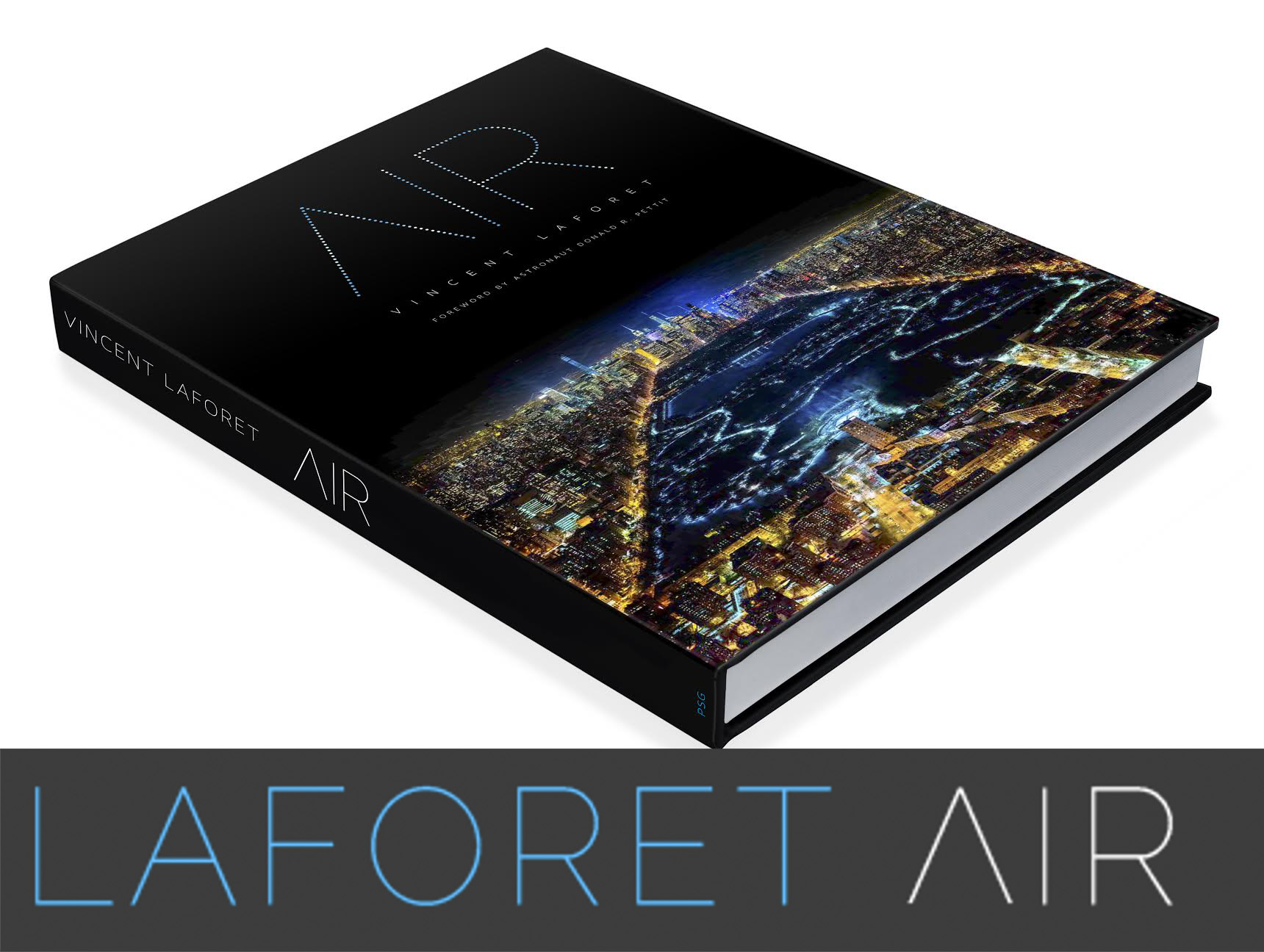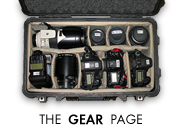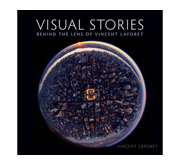Fader Filters vs Traditional ND Filters
 I recently had a chance to get my hands on two demo Fader Filters vs traditional ND filters and performed some comparison tests (results below)– but if you are unfamiliar with these new products, here’s a brief rundown of what they are and how they can come in handy for the HDDSLR filmmaker.
I recently had a chance to get my hands on two demo Fader Filters vs traditional ND filters and performed some comparison tests (results below)– but if you are unfamiliar with these new products, here’s a brief rundown of what they are and how they can come in handy for the HDDSLR filmmaker.
A Neutral Density Filter cuts down on the amount of light that reaches sensor (of film.) NDs come in different standard strengths as well– 1 stop, 2 stop, all the way up to 10 stops (and beyond.)
For the filmmaker, Neutral Density Filters are an essential tool. Still photographers have a bit more latitude to maneuver their exposure by changing the shutter speed. But filmmakers/videoagraphers generally leave their shutter speed fixed at 1/50th of a second. Therefore the HDDSLR shooter needs an ND filter for pretty much any exterior scene (unless they’re shooting at night of course,) otherwise they will find themselves shooting between f/11 through f/22 in bright sunlight at ISO 100 for example. Therefore, it is not uncommon for me to carry around 10 or more ND filters at a time for any production – big or small. As I said: ND filters are essential, and should probably be one of your very first purchases as you move from stills into HDDSLR video.
This is where the Fader Filters can come in handy – and really shine. Fader filters basically allow you to have all of the filters in one. Instead of having to purchasee separate ND filters (for example a ND 0.3 = -1 Stop of light, and ND 0.6 = -2 stops, an ND 0.9 = -3 stops, and ND 1.2 = -4 stops of light etc) you have the option of purchasing ONE filter that covers all of those ranges, and in fact in between. The Fader filers work much like traditional circular polarizers: in the flick of a wrist, you can cut out as much as 8 stops of light. This will come in really handy in documentary or on-location situations when you might not have the opportunity, or the time to unscrew the filter you already have on your lens, go searching through your camera bag for the right ND filter, and screw that into place. By then, the moment may be lost.
Now for the test results: below are some results between the Fader filters and TIFFEN ND filters. (click on th image to see the full resolution images.)
I tested the Fader HD Variable Neutral Density Filter line, specifically a 77mm Fader on an EF 70-200mm f/2.8L IS II USM on a Canon 5D MK II at Full Raw + Large JPEG, set to an f/5.6 and remotely triggered with a set of pocket wizards to minimize any camera shake. (You can use the 77mm Fader on most of the Canon Zooms, you will end up using the 82mm Fader on the Canon 16~35mm Version II, and the 72mm Fader for many of the Canon prime lenses.)
All in all, the Faders performed quite well. The ND range is extremely versatile and useful for the HDDSLR filmmaker. The main advantage of using the Fader is its ease of use, and critical time-saving benefits. I don’t see hardcore photographers and photojournalists reaching for the Fader any time soon as you can see when compared with a Tiffen ND 0.6, the sharpness quality is not as good:
That being said, don’t let the loss in sharpness scare you off. While some photographers might not find the sharpness up to snuff – HDDSLR shooters might find these filters do the job just fine. When you take into account the downsampling that takes places with HDDSLRs and the H.264 compression the loss in sharpness is hardly noticeable– and in some situations (mainly when encountering our favorite Canon moiré issues) the slight loss in sharpness comes in handy.
The only other downside that I noticed with this set of filters, is that I found it difficult (if not impossible on some lenses) to get the traditional Canon EF lens hood to attach as the Faders have a bit of a lip to them (to allow for the rotation of the optical elements within.)
Any documentary filmmaker, wedding shooter, or independent filmmaker looking for a big time saver with a big boost in efficiency and a shallower depth of field in their video, you may want to give these Fader Filters a try.
Tags: Fader, ND Filters, Photography, Vincent Laforet















am I the only one not seeing the images in this blog post? I would love to see the results of your test.
Sebastian Kubatz Reply:
November 24th, 2010 at 2:12 pm
@mel haynes,
you’re not the only one… same here.
Vincent Laforet Reply:
November 24th, 2010 at 2:55 pm
@Sebastian Kubatz, It loads – just be patient – we’ve put up high-rez files… we can put them to external links if that works better – but after the holiday… enjoy Thanksgiving
Hi Vincent, it’s great reading your stuff.
I’ve always wondered if there’s any colour shift when using these Vari NDs, especially when you’re using one of up to 8 stops? I ask this because it’s well known that the Red One camera (CMOS chip) experiences issues with IR contamination & to a lesser degree Sony’s EX cameras. In your experience what about say a 5DMKII using one of these Vari NDs?
Cheers
5D Mark II TEAM Reply:
November 24th, 2010 at 6:10 pm
Cool question. We noticed some color shifting at the ends of some Vari-NDs (at highest density values), dpending on brands and qualities of the Fader.
Would be nice to know Vincent’s experience.
Thanks a lot in advance.
At first glance, looks like faderfilters.com is just reselling Fader NDs from http://lightcraftworkshop.com/ with quite a mark-up.
gary g Reply:
November 26th, 2010 at 4:52 pm
i actually own both the faderfilter.com is better better quality glass and constructed better and not to mention made in japan not china
From my experience there is a unique color shift that makes color correction with other non-filtered cameras in a multiple camera shoot a nightmare. Also, the sharpness loss becomes even more evident on the longer end of lenses (ie. 70-200 @ 135 and beyond).
When I need something like this, I just reverse the glass on one polarizer, and screw it on to another. Then the cross polarization handles all of that just fine. Just rotate one and you can go all the way from -1.5 stops, to black. – Plus I don’t have to buy anything new!
5D Mark II TEAM Reply:
November 24th, 2010 at 10:57 pm
@Ben Horton, what you use are both Circular polarizers or you use a combination of Linear Polarizer + CPL? (in this last case I noticed color shifting).
Thanks.
I agree the fader ND’s are quite useful…I use the SinghRay Vari ND filter. But I have noticed that they reduce light more at the sides of the frame. It is quite easy to see this on a waveform display of a video clip shot with the vari ND in place as the the sky or other continuous across the frame bright area will be mapped as an “upside down smiley face”. The effect is most noticeable at max light reduction setting.
I have tested the Fader and the SingRay extensively. There is a sharpness issue, but the real problem is color shift. The test that should have been shown would have been a color meter test, or even better using a calibrated DreamColor monitor ready off the sensor itself, After I tested my filters, and seeing over 500k color shifts and some equally large magenta-green shifts, I sold mine on eBay. Color grading with these cameras is a nightmare to begin with, why make it even harder? There is also something that seems to happen to skin tone shot through a polarizer that I don’t really like. We now only use BW ND filters, or the TIffen Wafer Whites. They both are color consistent with a max tested deflection of 100k. But, that said, if I were going some where solo, someplace where I had to work quick, war zone for instance, I would probably go with a some sort of variable ND. A somewhat degraded shot is better than no shot at all.
Jim Reply:
June 18th, 2013 at 3:27 pm
@David Harry Stewart, have you tried to white balance after the filters are on.. If you move from sunlight to shade there is a color shift in the white balance… With any filter – ND, Polarized, or even changing direction or moving from shade to sunlight I adjust the white balance… If it doesn’t look how I want it then I shift the Green, Blue, or red – no big deal for me… Any filter will have a degree of shift.. Simple enough to make the adjustment in the camera – all else fails – post process can help out too…
I realy agree with David on this. Of course the Fader ND is a nice product but my main problem is that you are shooting with polarizer filters. I never use polarizers because they take out a lot of highlights from the image that makes it come alive. I realy only use them in situations where it’s not possible to do it with the traditional ND’s.
Mario Toscani Reply:
November 25th, 2010 at 2:00 am
@Mario Toscani, I forgot some things to mention. In the first place thanks Vincent for testing. In the second place, the filter still works as a polarizer and it therefore makes a big difference to how you rotate it opposite to the lens. So just like a regular pola filter.
I never leave home without them.
Having the benefit of being able to shoot shallow DoF at most any light condition, and not having to think and spend time on choosing which filters to screw on, IMHO rises the production value instantly. Run-n-gun/ENG style and getting the shots is how most of my projects can be characterised. Albeit apparently at the cost of a possible color shift as described here.
Curious to learn how Lightcraft’s FaderND holds up against SinghRays VariND. My preference goes out to the last, but I typically use that more often since it has a 77mm thread (I have 72 and 82mm from Lightcraft). Quality-wise, there seems to be a noticeable difference. If you hold them at a 30-45 degree angle against the light, you can see the FaderNDs having teardrops, whilst the SinghRay is clean.
I read somewhere that there are only certain situations in which you can use these – sth about them being most effective 90 degrees away from the sun. Do you know anything about this, Vincent?
Hello vincent,
Great article. I have been using nd filters to do long exposure during the day, especially near the beach, you get the fuzzy water in the middle of the day, check out this example of LA Hermosa beach, 50 second exposure taken in the midle of the afternoon :
http://sergeramelli.com/?p=87
I live in france, i hope I will find a shop where i can order this new type of filter, certainly very usefull as a lot less to carry
Serge
Great Vincent!
Do you use ND filters when you shoot water action, and what shutter speed do you use?
When I film water action. I find my shot very blurry and “not looking good” when I use 1/50 second. I find it nearly better to drop the ND filter, and use a shorter shutter speed to get a more sharp image.
Do you think the same?
Benjamin
I never leave home without them.
I definitely saw some issues while using them on a RED with a 70-200 lens at around 135-200. It looked degraded and wavy in the middle. Very confusing. As soon as I went back to normal ND it went away.
Video Production.
So, whats the conclusion about these filters (now available at B&H) but not THAT much cheaper then the SIngh Ray…ANyone try both brands? Which is the best route to go??
gary Reply:
May 12th, 2011 at 11:32 am
i own both i find that the fader hd filter is much better in quality its much sharper you lose any quality when shooting in video
I love my Fader ND and it has saved me on many occasions. There is a slight color shift but nothing that post can’t fix. I do hate the fact I can’t get my standard Canon EF lens hood on without a whole lot of trouble. Haven’t figured this out yet but I imagine there is a solution out there and would love to hear about it.
Vincent Laforet Reply:
September 20th, 2011 at 3:14 pm
Not really – it is a significant “pain”
Back in the spring, I went out to W. TX to shoot a story for two weeks on a working cattle ranch right on the Rio Grande. Didn’t see it happening but after about a week, I began to notice circular scratches on the inside of the two filters from all the dust. Another day or two and the filter was unusable. I’m buying a new one to replace the old one but I’m now going to make sure that I clean BETWEEN the two filters every day after shooting. I just wonder if there’s a way to seal this filter so it doesn’t get scratched. Anyone?
[snip] ” seeing over 500k colour shifts…”
To express colour shift in Kº is not very meaningful, unless one states specifically from which Kº to which Kº.
Mired (micro reciprocal degree) should be used for this purpose.
It is the same situation with ISO sensitivity:
ISO 100 + 100 ISO is double. ISO 800 + 100 ISO is barely noticeable.
Hello! I just wanted to let you know that I used your verbiage on one of my videos on YouTube to help explain in written form what ND filters are and there use. I left a link in the description that leads all my viewers to your page. Thank you for putting it so clearly!
http://youtu.be/PoAGRZ4Pvf8
Vincent Laforet Reply:
March 27th, 2012 at 1:47 pm
Thanks NP.
Good article. Just want to throw my 2 cents in. Any filter is a lens and every lens has it’s sweet spot even prime lens.. Sometimes you have to step them down or up to find a sweet spot where they are spot on… Being that ND filters are also lens, would mean that they too have a sweet spot… Most fader ND filters will have a limited range from about 35mm to 200mm and with in that range only a narrow path will be spot on and they may not be sweet at every aperture setting… meaning that the real range may be 50-100mm and be sweet at F5.6 or some thing others at F8 so to expect these faders to cover 24mm-1000mm and f1.2-f32 is pretty unrealistic.. they are what they are.. I have an el’cheapo $23 Bower (Japan glass ND fader lens) and it works fine for what it is. I use polarizers for taking glare off of water – they too are a compromise and only work when the sun is in the correct location relative to what direction you are shooting… They too have a limited “mm” range and also a sweet spot on the aperture setting for optimal use… I approach photography a little different than some.. I don’t look for perfection, but rather look to get the most out of what I am using – that is part of the fun, trying to find the settings that maximize the camera’s capabilities for each situation.. “I am not too bright but I can lift heavy things” hahaha You can learn a lot from a dummy – look what they did for the auto industry… lol